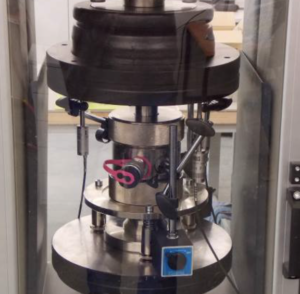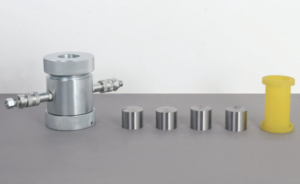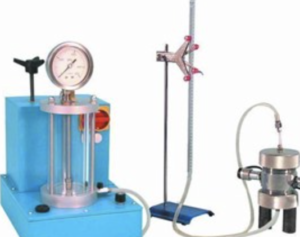How Do Advanced Soil Experimental Tests Revolutionize Construction Industry Practices?
Modern construction demands more than just bricks and blueprints—it requires precision in understanding the ground beneath1. Soil, as a dynamic and complex material, can make or break a structure depending on its strength, moisture behavior, and seismic response. With the rise of advanced soil experimental testing2, engineers now gain unprecedented insights into soil behavior, leading to safer, smarter, and more cost-effective construction practices. Here’s how cutting-edge soil testing methods are transforming the construction landscape from the ground up.
In-situ Soil Shear Strength Testing Using Advanced Geotechnical Sensors for Deep Foundation Design
Deep foundations such as piles and caissons3 rely heavily on the soil’s shear strength4. Traditional lab-based approaches are time-consuming and may not fully capture field variability. Enter in-situ testing5 with real-time sensors.
Innovations:
- Cone Penetration Tests (CPT) with pore pressure sensors (CPTu)
- Pressuremeter Tests (PMT) with digital feedback
- Shear wave velocity probes for undrained shear strength estimation
| Sensor Test Type | Measured Parameter | Foundation Design Benefit |
|---|---|---|
| CPTu | Tip resistance, sleeve friction, pore pressure | Precise pile bearing capacity prediction |
| SCPT (Seismic CPT) | Shear wave velocity | Liquefaction risk and stiffness profiling |
| Pressuremeter | Stress-strain behavior | Foundation expansion and settlement control |
These tools allow engineers to design foundations with exact load specifications, reducing overdesign and minimizing risk.

Multi-parameter Soil Microstructure Analysis via CT Scanning to Optimize Concrete–Soil Interaction in Retaining Walls
Retaining walls rely on the interaction between soil particles and concrete surfaces6, particularly under long-term loads. Microstructural analysis using X-ray Computed Tomography (CT)7 reveals void ratio distribution, particle orientation, and density gradients8, which are essential in predicting soil pressure on walls.
Key Capabilities:
- 3D imaging of soil skeleton deformation under stress.
- Identification of potential slip planes and zones of densification.
- Assessment of contact surface roughness with wall interfaces.
| CT Scan Metric | Engineering Insight |
|---|---|
| Void ratio map | Estimation of active/passive earth pressure zones |
| Particle alignment index | Shear zone development forecasting |
| Wall contact interface shape | Long-term friction behavior |
This level of detail improves the design of earth-retaining structures, especially in confined or sloped urban sites.

Soil–Water Characteristic Curve Experiments for Predicting Moisture-Induced Swelling and Shrinkage in Expansive Soils of Building Sites
Expansive soils—especially those rich in clays—can swell with moisture and shrink when dry9, causing damage to building slabs, pavements, and foundations. The Soil-Water Characteristic Curve (SWCC)10 maps this behavior under different suction levels.
Measurement Techniques:
- Filter paper method
- Pressure plate apparatus
- Dewpoint potentiometer
| Soil Type | Plasticity Index (PI) | SWCC-Derived Swell Potential | Mitigation Strategy |
|---|---|---|---|
| High-expansive clay | 45 | Very High | Lime stabilization, deep foundations |
| Moderately active silt | 22 | Medium | Compaction control, drainage layers |
| Sandy clay loam | 15 | Low | Shallow foundations acceptable |
These tests help engineers predict seasonal movement risks, choose the right foundation type, and avoid costly post-construction repairs.

Dynamic Soil Response Tests under Seismic Loading Conditions to Enhance Earthquake-resistant Building Design
In seismically active regions, understanding how soil behaves under dynamic loading is essential. Advanced lab experiments using cyclic triaxial tests, resonant column tests, and centrifuge modeling simulate real earthquake scenarios.
Key Dynamic Parameters:
- Shear modulus (Gmax)
- Damping ratio
- Liquefaction resistance curves
| Test Type | Measured Output | Design Application |
|---|---|---|
| Cyclic Triaxial Test | Shear strain, pore pressure | Assess liquefaction potential and settlement |
| Resonant Column | Damping, modulus vs. strain | Input for seismic response modeling |
| Centrifuge Modeling | Real-scale soil-structure interaction | Retrofit assessment and foundation redesign |
By integrating this data, structural engineers can design buildings that withstand ground shaking, especially those on soft or loose soils.

Conclusion
Advanced soil experimental tests are revolutionizing the construction industry by bridging the gap between lab data and real-world soil behavior. From deep foundation precision to seismic resilience and soil-concrete interaction, these methods equip engineers with the insights they need to design smarter, safer, and more sustainable structures. The future of construction is not just built—it’s deeply grounded in soil science.
-
Explore this link to learn how precision in soil understanding can enhance construction safety and efficiency. ↩
-
Discover the latest advancements in soil testing that can revolutionize construction practices and improve project outcomes. ↩
-
Understanding piles and caissons is crucial for effective deep foundation design and construction. Explore this link for detailed insights. ↩
-
Shear strength is a key factor in foundation stability. Learn more about its importance and applications in this informative resource. ↩
-
In-situ testing provides valuable data for foundation design. Discover its methods and benefits through this comprehensive guide. ↩
-
Understanding this interaction is crucial for effective retaining wall design and stability. Explore this link for in-depth insights. ↩
-
X-ray CT is a powerful tool for analyzing soil structures. Discover its applications and benefits in this informative resource. ↩
-
These factors are vital for predicting soil behavior. Learn more about their significance in soil mechanics through this resource. ↩
-
Understanding the effects of expansive soils is crucial for construction and land management, ensuring safety and stability in structures. ↩
-
The SWCC is essential for predicting soil behavior, making it a key resource for engineers and geotechnical professionals. ↩







